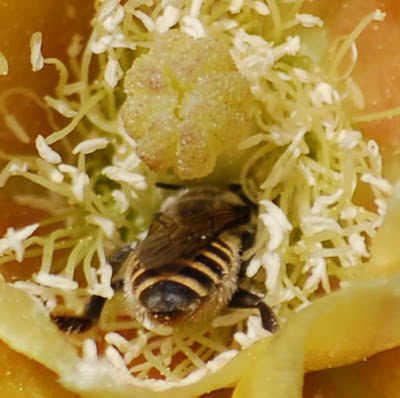When we drove a local gravel road the other day the visuals quickly changed from small town shops and restaurants to scrub desert, hills, ravines, endless views if you're up high . . . typical in rural Arizona.
Wildlife was plentiful. Hawks and golden eagles looked for mice and squirrels, and lotsa snakes that didn't like human companionship went about their business, pushing these same mice and squirrels back into their burrows.
Flowers provided a carnival of color...prickly poppies, penstemons already tall, prickly pear in bloom.
Prickly Poppies grow anywhere there's disturbed soil . . . roadsides, old garages, abandoned houses. The attractive blossom belies the rest of the plant. . . stems, leaves, and seed pods are covered with spines.
True to the poppy family the seeds provide a slight narcotic effect, if you're willing to endure working with the spine covered seed pod ( above,left....below, right/left).
Despite the wind that curled the petals a small butterfly negotiated its way to the flower, looking for nectar in all the meager places.
It doesn't take much to sustain a butterfly, but it was a lucky photo opportunity.
Nectar attracts these pollinators but the attraction is momentary until they travel to the next flower . . .maybe another prickly poppy.
But...maybe not.
Next for the butterfly was another plant with spines. Unlike the prickly poppy, the prickly pear has a stem that has morphed into a spongy, water storing pad and "leaves" that have evolved to water conserving spines. The pads carry a waxy coating that prevents water loss. Shallow roots absorb the minimal desert rainfall, exaggerated reproductive characteristics (flowers) attract pollinators.
The drive for life takes many forms.
Labels: bees, cactus flower, cactus flower photography, desert environment, desert photography, desert photos, flower fertilization, Mel Burke, perkinsville road, pollen, prickly pear, sexual activity


































